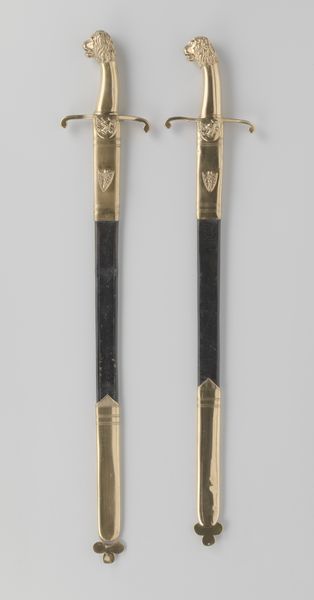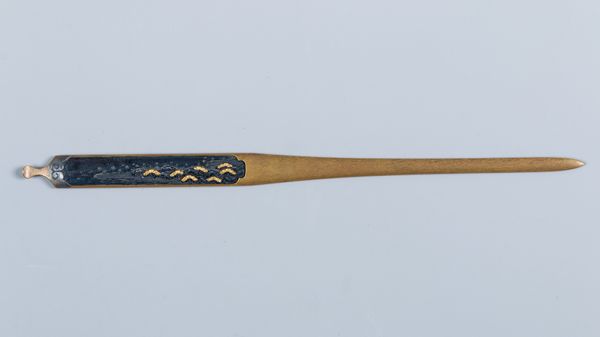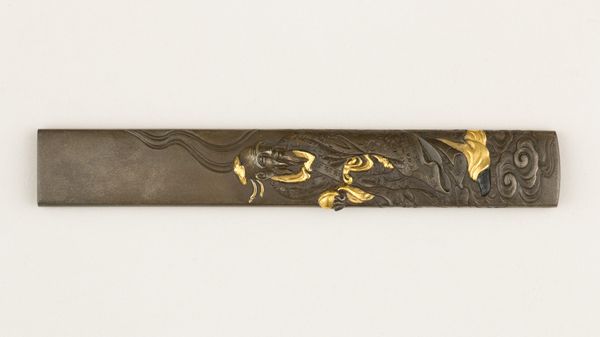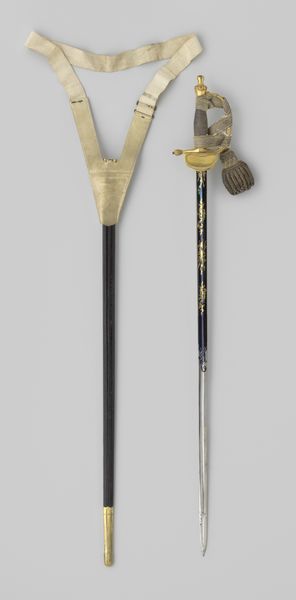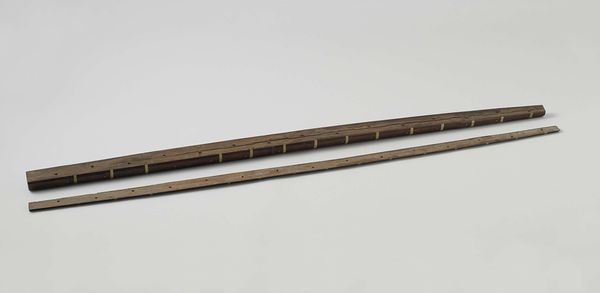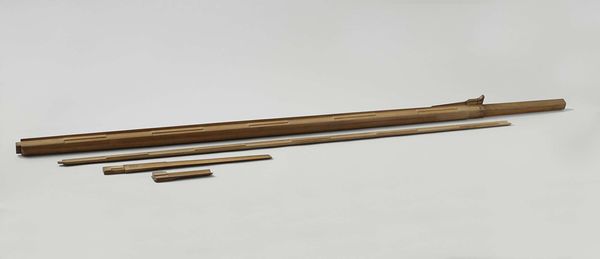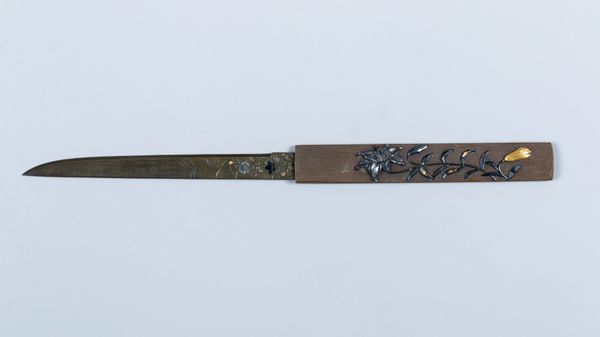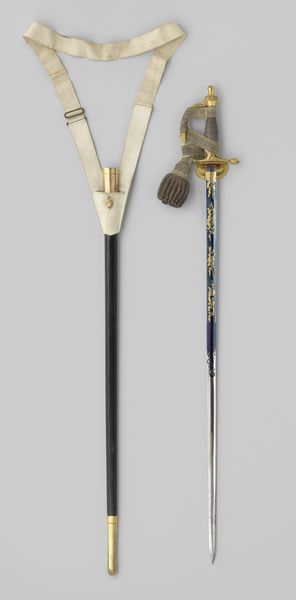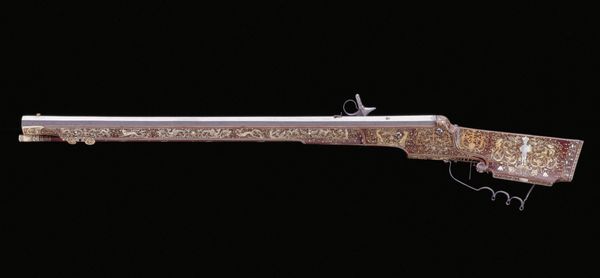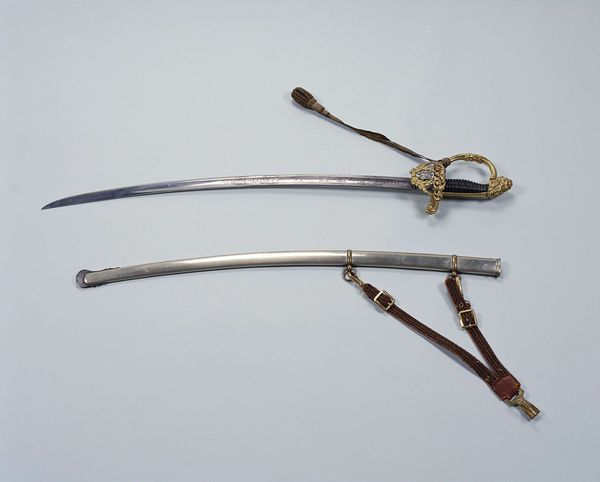
carving, metal, gold, ivory
#
carving
#
metal
#
asian-art
#
gold
#
japan
#
armor
#
decorative-art
#
sword
#
ivory
Dimensions: L. of hair dressing tool (kogai) (a) 8 5/16 in. (21.1 cm); L. of each grip ornament (menuki) (b, c) 1 11/32 in. (3.4 cm); L. of knife handle (kozuka) (d) 3 13/16 in. (9.7 cm)
Copyright: Public Domain
Curator: What strikes me immediately is the delicate precision. Such meticulous detail. Editor: Indeed. This is a Set of Sword Fittings, or Mitokoromono, by Gotō Sōjō, dating from 1450 to 1550. The materials consist of carving from metal, gold and ivory, and is now housed at the Metropolitan Museum of Art. Curator: Thinking about the labor invested, crafting gold and ivory into such intricate designs... who exactly was involved? Was this a solitary artist, or were there multiple artisans at work here? Were they members of a guild? How might that system of production have impacted their artistic choices? Editor: That's crucial to consider. The social standing of artisans within feudal Japan adds a fascinating layer to our understanding of their artistic autonomy. Moreover, swords carry heavy symbolism. We must think of what identity and political narratives would have been expressed via such craftsmanship in the Muromachi period. Who had the privilege to bear this finery? What does it say about gender roles at the time? Curator: I imagine it would be tempting to melt the gold. It is fascinating to think that someone was tasked to shape precious metals, carving each minute contour, meticulously chasing the details, and someone was getting paid to do it. Editor: Agreed. Also consider the socio-economic dynamics. Were those designs simply aesthetic choices or subtle messages to a specific audience, whether samurai or aristocratic observers? Also, consider the role of swords at the time; these weren't only fighting implements. What statements were those privileged enough to wear such things trying to send through this luxury craft? Curator: What becomes increasingly important, for me, is knowing where those materials came from. Did Gotō Sōjō obtain materials through trade or plunder? The raw material has such importance in itself. The gold mines must have played some importance for the style that was later applied, no? Editor: Without accounting for socio-historical context, we miss out on what it meant for Gotō Sōjō to produce art during this period. With this in mind, it is easier to discern between mere beauty, and political potency.
Comments
No comments
Be the first to comment and join the conversation on the ultimate creative platform.
